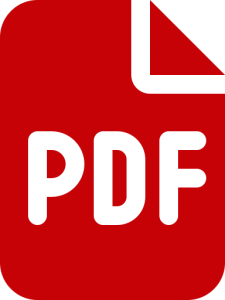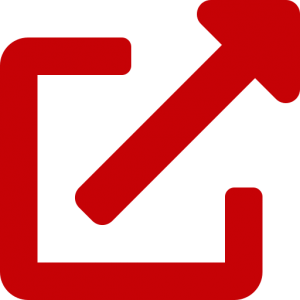In today’s competitive industrial landscape, optimizing logistics is no longer just an option—it’s a necessity. For factories, logistics is the lifeblood of operations, involving everything from raw material procurement to product distribution. Efficient logistics optimization can significantly reduce operational costs, enhance delivery performance, and improve overall productivity.
In this article, we’ll explore how factories can streamline their logistics processes, the benefits of doing so, key areas to focus on, and real-world solutions that can be implemented right away.
Why Logistics Optimization Matters for Factories
Before diving into strategies, let’s understand why logistics optimization is crucial in a factory setting:
-
✅ Cost Reduction: Optimized logistics cuts waste in fuel, labor, and time.
-
✅ Faster Production Cycles: Efficient movement of materials ensures smooth production flow.
-
✅ Improved Customer Satisfaction: On-time delivery builds trust and strengthens client relationships.
-
✅ Inventory Control: Better logistics means better stock visibility and planning.
Key Areas to Optimize in Factory Logistics
1. Inbound Logistics
This includes everything related to sourcing raw materials or components from suppliers. Optimization here involves:
-
Consolidating shipments to reduce transport frequency
-
Using supplier-managed inventory (SMI)
-
Tracking material arrival in real time
2. Internal Logistics
The flow of goods inside the factory is just as important:
-
Mapping material flow to reduce unnecessary movement
-
Implementing automated guided vehicles (AGVs) or conveyor systems
-
Creating lean layouts to shorten travel distances
3. Outbound Logistics
This covers finished goods leaving the factory:
-
Route optimization for delivery trucks
-
Partnering with reliable 3PL (third-party logistics) services
-
Offering flexible shipping options to customers
Smart Strategies to Optimize Logistics
📊 1. Use Logistics Software and IoT
Invest in logistics management systems (LMS) or Enterprise Resource Planning (ERP) tools that allow you to track inventory, shipments, and production schedules in real time. Pair it with IoT sensors to monitor vehicle location, cargo temperature, or equipment usage.
🏭 2. Warehouse Layout Optimization
Design your storage and picking areas based on product demand frequency. Adopt systems like:
-
FIFO (First In, First Out) for perishable goods
-
ABC analysis to prioritize fast-moving inventory
-
Cross-docking to minimize storage time
🚛 3. Route and Load Optimization
Use route planning software to reduce distance and fuel consumption. Also, maximize truck capacity by smart load planning to avoid underutilized space or excess weight.
⛓️ 4. Collaborate with Supply Chain Partners
Build stronger relationships with suppliers and logistics partners. Data sharing improves transparency and enables just-in-time delivery models.
🌐 5. Digitize Paper-Based Processes
Go paperless for faster operations and better data analysis. Implement digital proof-of-delivery (ePOD), e-invoicing, and cloud-based inventory records.
📦 6. Automate Where Possible
Introduce automation in packing, loading, labeling, and tracking. Even small changes like barcode scanning or pick-to-light systems can lead to significant time savings.
Challenges in Logistics Optimization
Despite the benefits, factories often face several roadblocks:
-
📉 High Initial Investment: Upgrading systems can be expensive.
-
❌ Resistance to Change: Staff may be reluctant to adopt new processes.
-
📦 Complex Supply Chains: Global sourcing adds uncertainty.
-
📊 Data Overload: Without proper systems, too much data can be overwhelming.
The key is to start small—pilot new systems, monitor results, and scale up gradually.
Real-World Example: Automotive Parts Manufacturer
A car parts manufacturer in Indonesia implemented route optimization software for outbound logistics. By analyzing traffic patterns and delivery schedules, they reduced delivery times by 25% and fuel costs by 15% in just six months. They also implemented barcode systems in their warehouse, cutting picking errors by half.
Measuring Success: Logistics KPIs to Track
To know if your optimization is working, monitor these KPIs:
-
⏱️ On-Time Delivery Rate
-
📦 Inventory Turnover Ratio
-
🚛 Freight Cost per Unit
-
🏭 Warehouse Utilization Rate
-
📈 Order Fulfillment Lead Time
Regular reviews help identify gaps and areas for continuous improvement.
Q&A: Logistics Optimization for Factories
❓ What is the first step in optimizing factory logistics?
A: Start with a logistics audit—review your current processes, identify bottlenecks, and analyze key metrics to find opportunities for improvement.
❓ Is automation necessary for logistics optimization?
A: Not always. While automation can accelerate processes, many improvements can come from reorganizing layouts, better scheduling, or smarter vendor coordination.
❓ How can small factories optimize logistics on a budget?
A: Focus on low-cost changes like reorganizing inventory, digitalizing spreadsheets, or negotiating better terms with suppliers and transporters. Even using free route optimization tools can help.
❓ What is the role of data in logistics optimization?
A: Data enables better decision-making. With accurate and real-time data, factories can plan proactively, reduce errors, and spot trends early.
❓ Should logistics be managed in-house or outsourced?
A: It depends on your scale and focus. Outsourcing to 3PLs can be cost-effective and provide access to expertise, but in-house control offers more customization.
Logistics optimization for factories is a strategic move that pays off through reduced costs, increased speed, and enhanced operational performance. From smarter warehouse layouts to leveraging digital tools, every step you take brings your factory closer to world-class efficiency.
Whether you’re managing a small production line or a multinational manufacturing facility, the principles remain the same: streamline, automate, and continuously improve. The future of factory logistics is smart, connected, and data-driven—are you ready to optimize?











